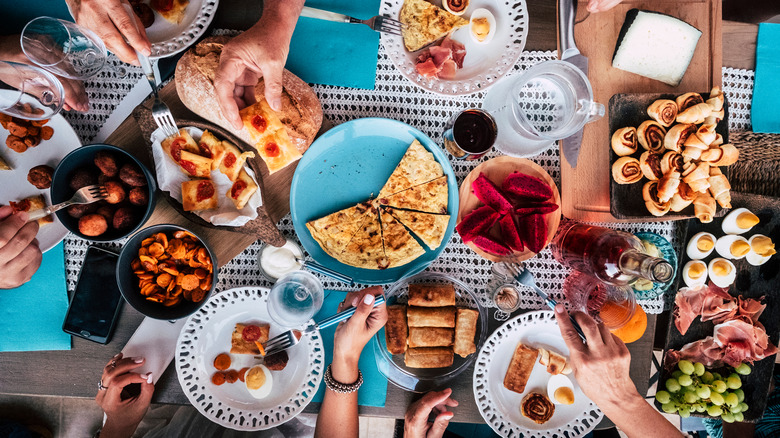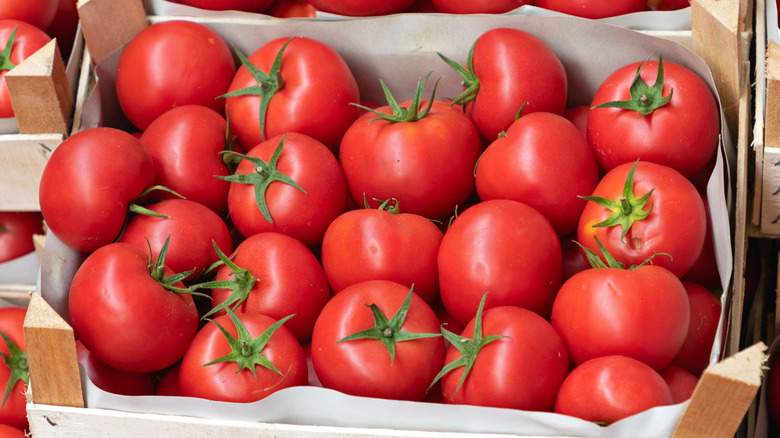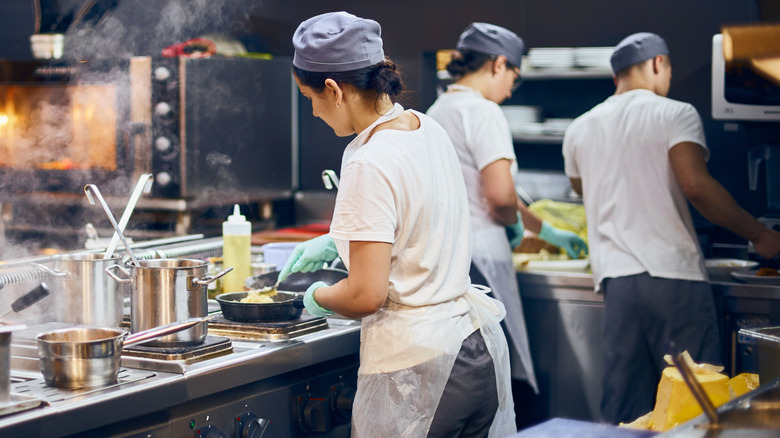Why The Best Restaurant Dishes May Never Be Offered To Guests
For three decades — from 1979 to 2009 — Chanterelle wowed New York City diners with its take on French contemporary dishes prepared with an Asian flair. Chef David Watluck serenaded diners who walked through Chantrelle's doors with a symphony of flavors, made from expertly prepared seafood sausage; grilled foie gras with portobello; or a memorable selection of curated cheeses from France, Italy, and the United States (via Gayot). The restaurant made every effort to stay fresh to its guests; it offered up a new seasonal menu twice a year.
But before doors opened to diners looking to savor chef David and his wife Karen's continental-inspired cuisine, the Chanterelle staff would first enjoy their own celebrated menu — an international array of dishes that was as diverse as the restaurant's team members themselves. In his book "Staff Meals from Chanterelle," Watluck wrote, "Staff meals at Chanterelle are a mosaic of flavors as diverse as the people they nourish ... There are always prodigious portions of side dishes such as rice, noodles, or couscous ... Our main courses [...] range from international in inspiration to resolutely all-American ... The result will be good things to eat such as Moroccan lamb shanks, beer-braised short ribs, chicken gumbo, and Hungarian-style stuffed cabbage."
Staff meals serve several functions
Chanterelle was not the only restaurant that served up staff meals — or "family meals" as they are called — that could give the actual restaurants' menus a run for their money. Because working hours are long, it is standard practice for most dining establishments to feed the staff before the first evening service begins. Chef Julien Royer of Singapore's Odette, which serves nouvelle cuisine and holds three Michelin stars, says restaurant staff cook and serve their own meals, because as he put it, "It's better when we cook. It puts people in a good mood when we have something that tastes good. This takes us back to the notion of delivering happiness through our food. We do it for our guests [and] it's the same for our team" (via Michelin).
Staff meals can serve several functions at high-end restaurants: one is to ensure that there is no food wastage, which means chefs cook with whatever is on hand, and the other is to experiment. Odette sous chef Adam Wan recalled one such occasion, when Odette had been given off-season tomatoes and they needed to be tasted. "So, I made a nice tomato salad with stracciatella cheese and basil. Very classic, very tasty," he said.
Standout staff meals are good for morale
In some cases, a staff meal might be even used to test the abilities of a prospective hire — and if a new chef isn't good enough for the staff, then he wouldn't be considered good enough for the restaurant, writes Christine Carroll in "Come In, We're Closed: An Invitation to Staff Meals at the World's Best Restaurants."
To Jonny Lake, head chef of the three Michelin-starred The Fat Duck, staff meals are critical because "Making a big deal of staff food helps build team morale and raises standards. From a chef's perspective, if you don't care enough to put up good-quality staff food, what does that say about you?" So it shouldn't come as a surprise that The Fat Duck's staff feast on dishes like cream-baked cod with dill and olive oil smashed potatoes with rocket (via The Guardian).
Wylie Dufresne agrees. "I don't think everyone here [at the WD-50] is the best of friends, but for the most part, I think they're friendly. So if you can't make good food for your friends, how can you make good food for strangers?" he says, as he describes a staff favorite: grilled hanger steak with classic béarnaise sauce.


